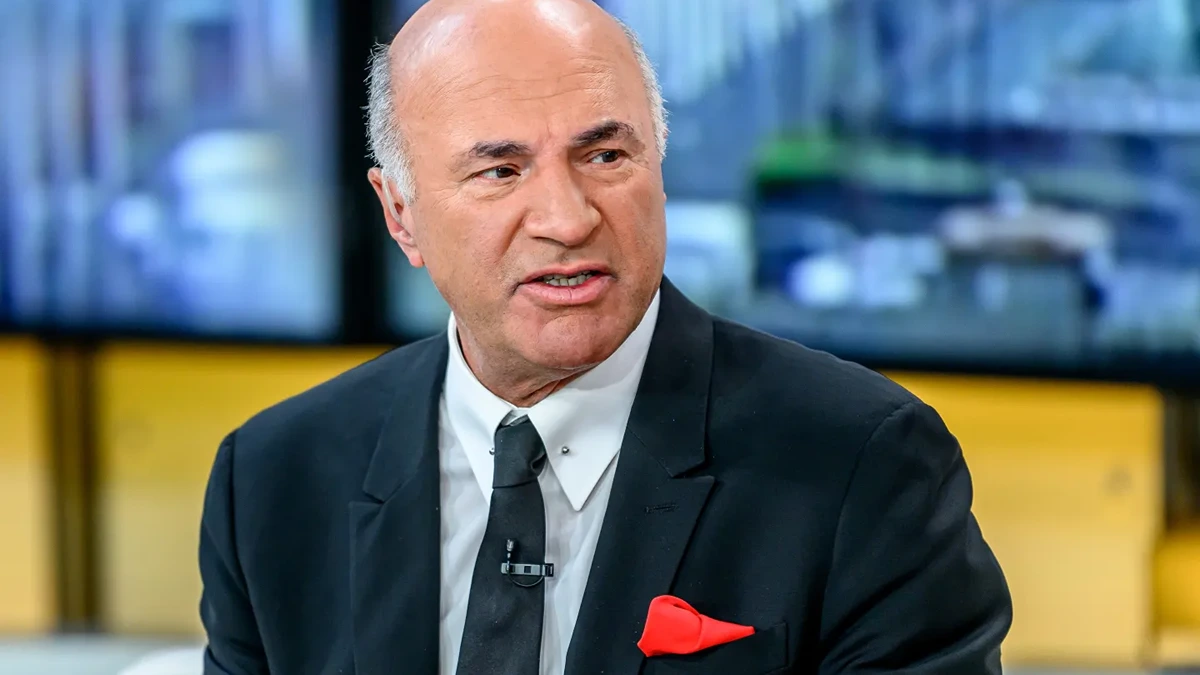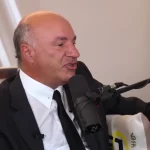
In a world awash with economic uncertainty, one voice, Kevin O’Leary, stands out for seeing opportunity in chaos.
Recently, in an interview with Politico and covered by International Business Times, O’Leary argued that the trade turmoil triggered by Donald Trump’s sweeping tariffs is not just a headache. Rather, it’s a goldmine for entrepreneurs and investors.
Here’s a breakdown of O’Leary’s view: what’s going on, why he thinks this is a moment to act, and how you might position yourself in such a dislocated world.
The Backdrop: Trade Shocks, Tariffs And Disruption
The Canadian businessman starts by acknowledging the obvious: the tariff regime rolled out by the Trump-led policy is raising input costs and disrupting businesses globally. He describes it as “a headache for businesses.”
When tariffs go up, supply chains stretch, costs rise, and winners and losers emerge. But for O’Leary, that very disruption is where the opportunity lies.
Already, statistics show that business formation in the U.S. rose even under these challenging conditions. According to the Census Bureau, business formations rose during the pandemic after declining initially — evidence that even in chaos, entrepreneurial momentum can build.
He also notes that specific sectors, especially retail trade, have seen more of the uptick, while others (construction, warehousing, services) are more muted.
The Contrarian Mindset: “Best Time To Start A Business Is In Chaos”
One of Kevin O’Leary’s most pointed statements: “In fact, the best time to start a business, proven by the statistics, is in chaos. Every time the American economy goes through some kind of a correction, it is a fantastic time to be an entrepreneur and start something. And then you have to figure out how to pivot through it.”
This flips the usual narrative. Many entrepreneurs wait for calm, clear skies, the Shark Tank investor argues. Hence, when everything’s messy, that’s when opportunity opens up. Why?
- Violent changes force legacy players out of comfort zones; they’re stable but slow.
- Because of disruption, inefficiencies pile up, supply chains break, rules change, and costs are re-allocated.
- That means dislocation of old assets undervalued, new models needed, gaps to fill.
- Smart players can enter, pivot quickly, and gain share while the incumbents flounder.
In essence, he sees the trade-turmoil environment as a launching pad, not a barrier.
How O’Leary Suggests You Pick The Spots
Delving deeper, Kevin offers guidance on how to act in such an environment:
- The headlines are noisy, but what really moves the needle is policy change that forces cost re-allocation or structural shifts.
- “Find something that has been completely dislocated and invest in that because of the policy changes”. That is: disruption is equal to opportunity.
- Choose the path of least resistance: In a chaotic environment, some sectors will be dragged down. On the other hand, others will be pulled up by necessity. The trick is to identify the latter.
- Use the example of trade deals: He points out that deals with the EU and Japan reduced auto tariffs from 25% to 15%. While also locking in billions in U.S. investment.
Don’t just follow the broad market; dig into the dislocations and structural shifts.
Why It Isn’t Just Theory: Examples and Past Precedents
O’Leary reminds us that many of America’s iconic companies were founded in recessions, trade wars or real-estate crashes. That means it’s not just theoretical. Instead, history backs up the idea that chaotic environments breed winners.
He also aligns himself with other heavyweight investors, like Bill Ackman and Warren Buffett.
So Kevin situated his argument not just in theory but in the rock-solid playbook of contrarian investing.
What Does This Mean?
Given this viewpoint, what should one do?
For Entrepreneurs
- Focus on sectors where the input cost structure or supply chain has been disrupted by tariffs/trade shifts. That might be manufacturing relocation, logistics re-routing, or new import‐substitution plays.
- Build agility: pivot quickly as policy and trade climates evolve; it’s not set-and-forget.
For Investors
- Use policy as an indicator for tariff changes, supply chain, and trade-deal updates.
- Don’t wait for clarity to return. As O’Leary says, waiting for “certainty” often means it’s too late.
- Protect risk: yes, volatility is high, but staying out means missing opportunities.
Caveats: Why This Isn’t A Free Lunch
Of course, Kevin O’Leary doesn’t deny the headwinds. The same article flags that higher input costs from tariffs are real. And disruption can destroy businesses just as easily as it builds them.
Important cautions:
- The timing of policy shifts is uncertain. Tariff regimes may linger, reverse, or change shape unpredictably.
- Not all industries will benefit. He also highlights that areas like warehousing, professional services, and transportation remain muted.
- For investors, volatility can wipe out value just as easily. The “goldmine” only appears if you pick the right pockets of disruption and move in at the right moment.
Why This Matters For Global Markets
The implications extend beyond the U.S. If you’re an investor in India, the lessons still apply:
- Trade disruptions affecting U.S. supply chains ripple globally. That could mean sourcing, manufacturing or export opportunities shift to emerging markets.
- Entrepreneurial mindsets that see chaos as an opportunity can translate to local markets, too. Whether by serving displaced supply chains or by innovating around higher input costs.
- For global investors: don’t just watch U.S. macro numbers; instead, watch policy shifts. Where tariffs are being reduced, where trade re-routing is happening, and where new deals are being struck. These are the windows.
Conclusion
Kevin O’Leary’s message is bold, but simple. Don’t wait for the world to stabilize. When tariffs rise, trade deals get renegotiated, and supply chains get shaken up. That’s when you can capture outsized returns and build something new.




















